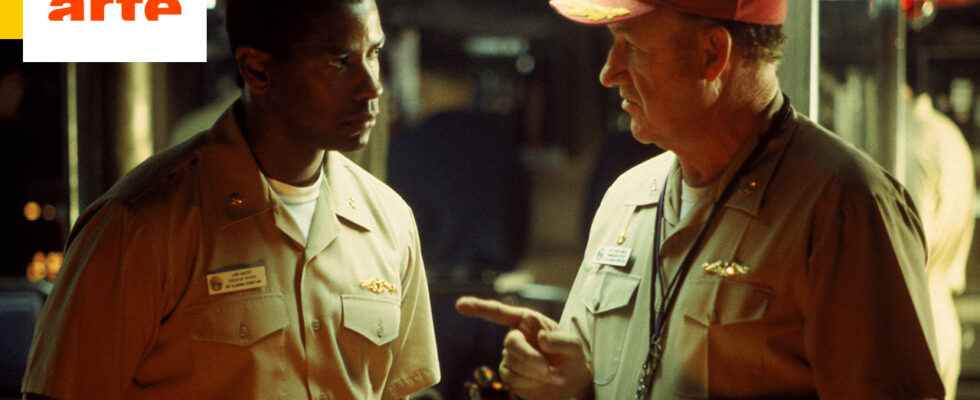Solid action film signed by Tony Scott and broadcast this evening on Arte, “USS Alabama” offers a beautiful duel between Denzel Washington and Gene Hackman. A story based on a true story that took place during the Cuban Missile Crisis in 1962.
The commander of the most powerful nuclear submarine, Franck Ramsey, a veteran of the American army hires Ron Hunter, a young officer, to assist him. Their mission is to go near the Soviet shores and destroy, if necessary, the submarines used by Russian radical nationalists, ready to start a 3rd world war.
Not agreeing on the follow-up to be given to a message they have just intercepted, the two American officers are going to wage psychological warfare within their own submarine…
USS Alabama
Between impeccable action scenes and dialogues calibrated by a certain Quentin Tarantino (not credited in the credits), this post Cold War film, in the form of a camera under high tension, offers a beautiful duel between Gene Hackman and Denzel Washington.
Their confrontation resonates strangely with the current burning geopolitical news elsewhere; at a time when there is much talk of the nuclear threat from Russia, mired in its war in Ukraine. “In the nuclear age, the only enemy is war itself” launches Denzel Washington to his superior, who replies : “We must preserve democracy, not apply it!”
And if our preference in this register of films, the sub-genre of submarine films, goes rather to The Hunt for Red October by John McTiernan released five years earlier, USS Alabama remains a very solid film signed by the late Tony Scott.
Like its Red October counterpart, Scott’s film is inspired by a very authentic event. What’s more, chilling. An episode where, precisely, Humanity passed very close to a 3rd world war.
The film is closely analogous to events during the Cuban Missile Crisis in October 1962 aboard the Soviet B-59 nuclear-powered submarine, with the character played by Denzel Washington mirroring the Soviet second-in-command Vasily Arkhipov.
Shortly before the departure of the B-59, Vassili Arkhipov had asked his superior, in which case to use nuclear weapons. The answer had not been very clear, the submarine having to use its nuclear weapon in the event of damage which would be carried to him or on special order of Moscow.
On October 27, 1962, a US Navy squadron detected the presence of the B-59 near Cuba. The American ships began to drop depth charges, in order to compel the Soviet submarine to surface for identification.
Messages from the US Navy, indicating that these training charges were not offensive, never reached the B-59 or Soviet Navy headquarters.
The B-59 had been without news from Moscow for several days and, although the submarine’s crew had intercepted American radio broadcasts, when it tried by diving to outrun its pursuers, the depth made it impossible to intercept the traffic. radio.
The crew did not know whether war had broken out or not. The captain of the B-59 submarine, Valentin Grigorievich Savitsky, believing that a war had probably started, wanted to launch the nuclear torpedo.
US Navy photographer — http://www.gwu.edu/~nsarchiv/NSAEBB/NSAEBB75/#IV The B-59 submarine
The three senior officers on board – Captain Valentin Savitsky, political officer Ivan Semonovich Maslennikov, and sub-flotilla commander Vasily Arkhipov, whose rank was the same as Savitsky’s – had been ordered not to launch the nuclear torpedo only in the event of unanimous agreement between them.
While the first two were in favor of launching the nuclear torpedo, Arkhipov alone opposed it and eventually persuaded Savitsky to surface and await orders from Moscow. The weapon was therefore not launched, and could not become a trigger for the war which then threatened to degenerate into nuclear war.
